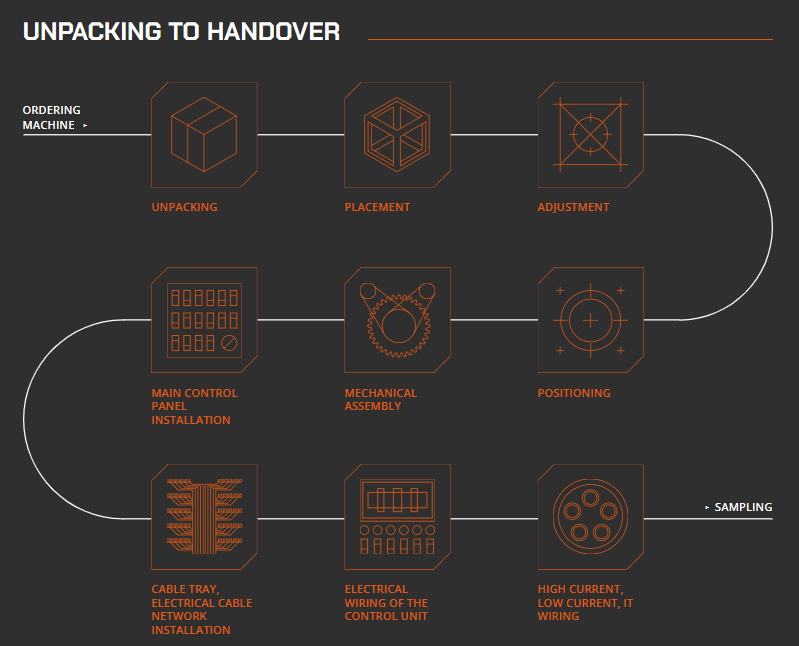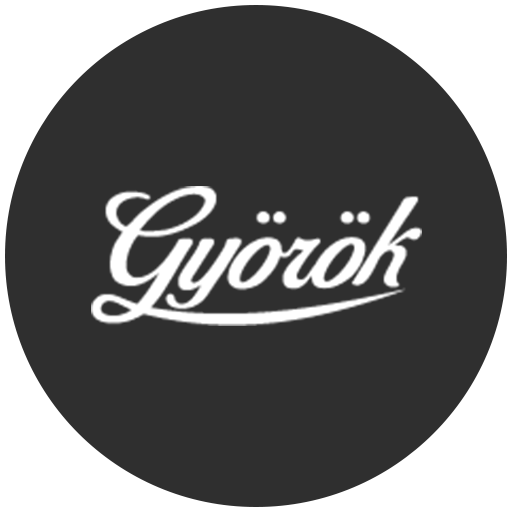Our aim is to provide our customers with a tailor-made technical solution to get their stable production up and running in the shortest possible time and in the most cost-effective way.
Why entrust the installation to professionals?
The installation and commissioning of a production line is an extremely complex process, which depends to a large extent on the future operating environment. For example, if there are variations in the operating environment or in the electrical network during commissioning, this can lead to financial losses due to delays in production. But even if the initial unpacking and set-up goes smoothly, there are usually always minor problems that can take a long time to rectify without the right technician. The energy and time spent, for example due to safety considerations, can even seriously delay the start-up of production. Remember that the systematic commissioning of a large industrial installation often takes several weeks.
The operation of the equipment is usually carried out by the subsequent operating staff after the initial commissioning. For this reason, our company, as the commissioning company, depending on its contractual obligations, often also undertakes the training of the machine and the equipment. The commissioning can be considered successful if the machine or equipment has been unpacked professionally, set in place, connected to the necessary networks, safely commissioned in accordance with the health and safety regulations and the equipment is capable of producing the product in the required quality and quantity.
Commissioning is considered complete when the following three objectives have been achieved:
- Operability of the machinery, equipment, parts of the plant: the objective is to achieve operability and successful start-up of the trial run
- Trial run: start of production of the product, even in phases
- Successful take-over: the equipment has reached the guaranteed performance, usually established within 72 hours of operation
But more about the details:
- Unpacking: the machines are mostly delivered in containers or wooden boxes to minimise the risk of damage by the manufacturer. In most cases, the machine or equipment is removed from the container smoothly. Our experienced technicians are prepared for every eventuality, so they can lift the equipment out of the shipping container quickly and efficiently.
- After unpacking, the machine is set in its working position. Before the equipment arrives, we will therefore be informed about the size of the equipment and compare it with the production site. If necessary, we will arrange for a suitable forklift truck or the dismantling of the wall. Then only the obstacles within the plant need to be moved or avoided.
- Setup: Once the machine or equipment is in place inside the plant, the next step is to set up the machine accurately. This process involves setting the machine to the correct millimeter in relation to other machines or utilities, and leveling it. This is also important for the optimum operation of the machine and to avoid damage to the machine. This operation also includes the positioning of the machine.
- Mechanical assembly. This is the phase during which all other parts or sub-assemblies are fixed in place. It also includes the connection of the machine or equipment to other machines.
- Installation of the electrical cabinet: this is either installed on the machine itself or in a separate electrical cabinet, depending on the size and type of the make. During installation, our specialists will be careful and precise, because a small mistake can cause serious damage. Our electrician colleagues connect all wire ends in place, thus guaranteeing a safe manufacturing process. The machine controls are also set and programmed during this process.
- The installation of the cable duct and the electrical cable network from the electrical cabinet to the machine, and possibly also inside the machine, to ensure smooth operation.
- Electrical wiring of the control and IT wiring of the strong and weak currents. All wiring must be terminated in the correct location for safe operation and maintenance.
Once all these operations have been carried out correctly, the machine can be put into operation and all the remaining settings, programming and test runs can be carried out.

